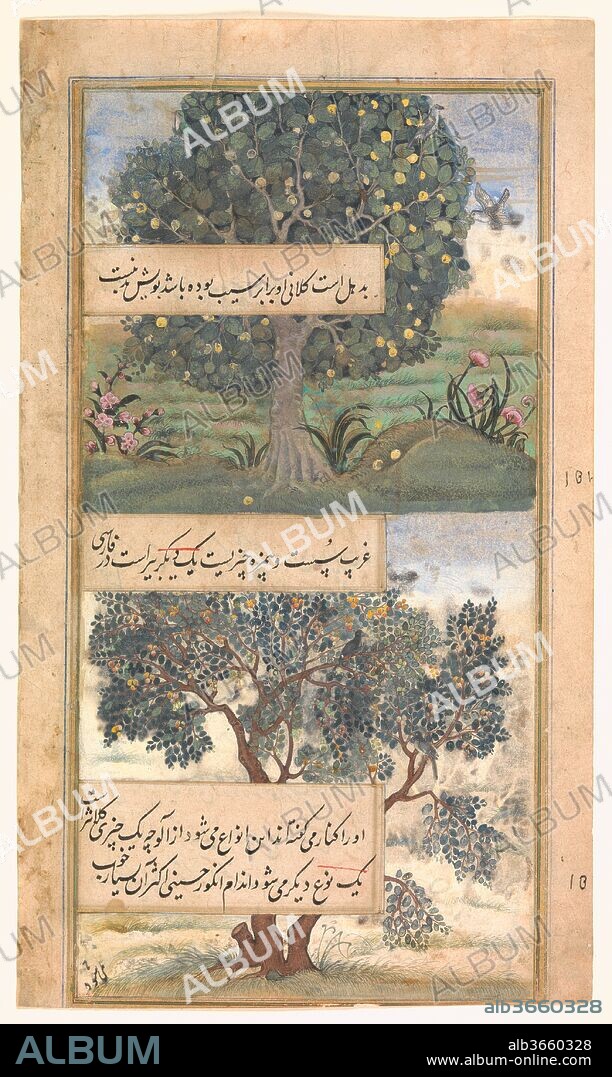alb3660328
"Three Trees of India", Folio from a Baburnama (Autobiography of Babur)

|
Añadir a otro lightbox |
|
Añadir a otro lightbox |



¿Ya tienes cuenta? Iniciar sesión
¿No tienes cuenta? Regístrate
Compra esta imagen
|
?
Impresiones, tarjetas y regalos personales o referencias para artistas. Solo para un uso no comercial. No se permite la reventa.
|
$19.99 |
|
?
|
$19.99 |
|
?
|
$49.99 |
|
?
|
$69.99 |
|
?
|
$199.99 |
Añadir al carrito
Para otros usos,
Título:
"Three Trees of India", Folio from a Baburnama (Autobiography of Babur)
Descripción:
Ver traducción automática
"Three Trees of India", Folio from a Baburnama (Autobiography of Babur). Dimensions: H. 9 13/16 in.(25 cm)
W. 5 1/8 in. (13 cm). Date: late 16th century.
The Baburnama, one of the most important texts of the Mughal period, provides insight into the literary, intellectual, and cultural world of Babur (1483-1530), founder of the Mughal empire. The Baburnama is especially celebrated for its observations of India's natural world, an aspect of the text most pleasingly captured in the subject matter here. The page depicts three trees: one on the recto (jackfruit) and two on the verso (monkey jack and lote). Interspersed among the images are texts in nasta'liq Persian script describing the trees and their fruits. During the reign of Babur's grandson Akbar (1556-1605), four imperial copies of the Baburnama were created, each illustrated by leading artists of the royal atelier. This folio comes from the earliest of these copies, the 1589 manuscript, which was likely a model for the later versions. It is thought originally to have contained 191 illustrations, many of which were dispersed in 1913, with a substantial portion remaining in the Victoria and Albert Museum, London. The collaboration between two or more artists, as seen here, was typical of early Mughal workshop practice.
Técnica/material:
Ink, opaque watercolor, and gold on paper
Museo:
Metropolitan Museum of Art, New York, USA
Crédito:
Album / Metropolitan Museum of Art, NY
Autorizaciones:
Modelo: No - Propiedad: No
¿Preguntas relacionadas con los derechos?
¿Preguntas relacionadas con los derechos?
Tamaño imagen:
2628 x 4400 px | 33.1 MB
Tamaño impresión:
22.3 x 37.3 cm | 8.8 x 14.7 in (300 dpi)
Palabras clave:
 Pinterest
Pinterest Twitter
Twitter Facebook
Facebook Copiar enlace
Copiar enlace Email
Email
